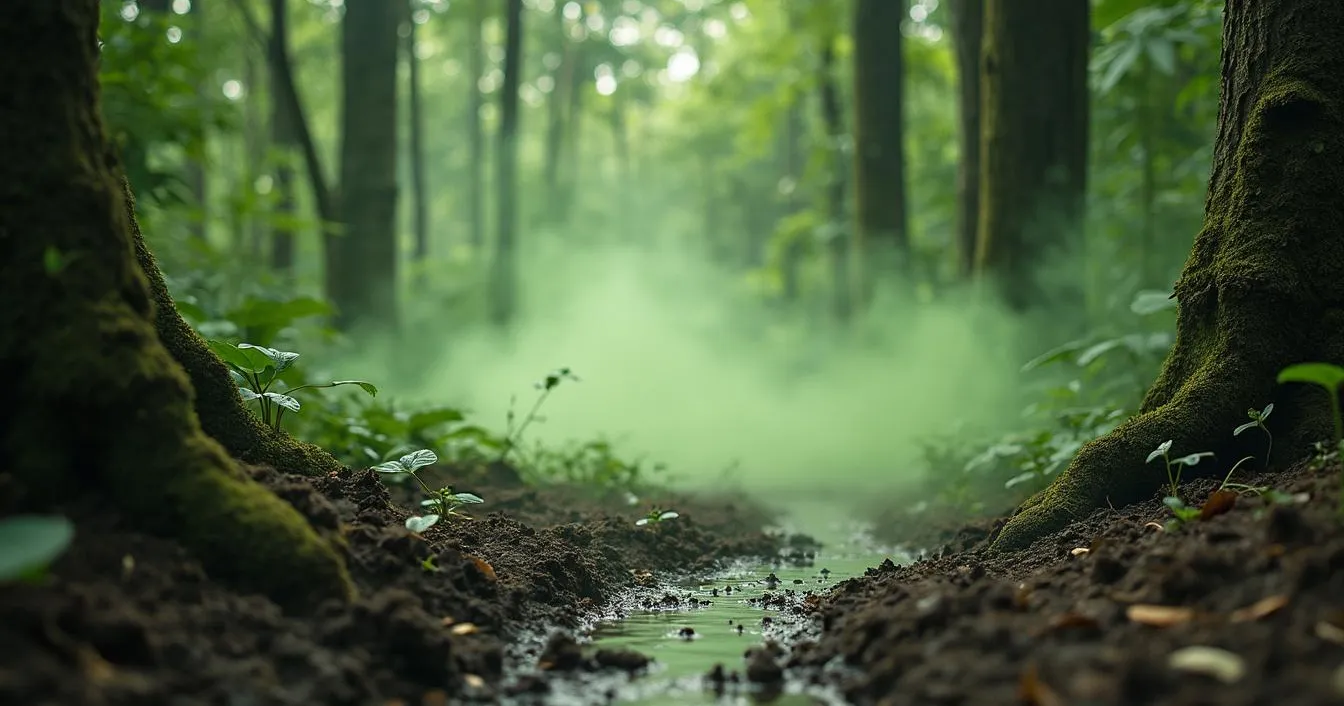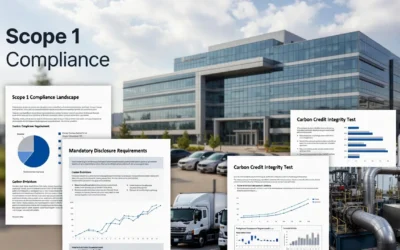A Call for a Sustainable Alternative
In a quest for a solution many overlooked major challenges of forestry carbon credits. As the world intensifies its battle against climate change, carbon credits have emerged as a critical tool for offsetting emissions and promoting sustainability. However, a growing body of research reveals that not all carbon credits are created equal. Once hailed as a cornerstone of carbon offset strategies, forestry-based carbon credits are increasingly under scrutiny due to significant flaws that threaten their integrity and effectiveness.
An article published at the Yale School of the Environment in June 2019 discusses a major problem with Amazon forestation credits. The Yale Environment 360 article explores a surprising discovery: trees, particularly those in wetland and tropical environments, can emit significant amounts of methane, a potent greenhouse gas. The study focuses on how the waterlogged conditions of these environments promote methane production in the root zones of trees. This methane emission can counteract the carbon sequestration benefits traditionally associated with forests, complicating their role in climate change mitigation.
For more details, you can read the full article, here.
The Methane Emission Paradox
Forests have long been celebrated as vital carbon sinks—natural systems that absorb more carbon dioxide (CO2) than they emit, helping to mitigate the impacts of climate change. However, recent studies have revealed a troubling paradox: certain types of forests, particularly those in wet, tropical regions, can emit significant amounts of methane (CH4), a greenhouse gas far more potent than CO2.
Why Methane is Particularly Harmful
Methane is approximately 80 times more effective than CO2 at trapping heat in the atmosphere over a 20-year period. This means that even small amounts of methane can have a disproportionately large impact on global warming. The concern is that while forests sequester CO2, the simultaneous release of methane—especially in large quantities—can negate or even surpass the climate benefits of carbon sequestration.
In waterlogged conditions, such as those found in tropical rainforests, the soil becomes anaerobic (deprived of oxygen), which creates the perfect environment for methanogenic bacteria to thrive. These bacteria break down organic matter and release methane as a byproduct, which can then escape into the atmosphere through the roots and stems of trees. Research shows that this methane production can be substantial, leading to a reevaluation of the net climate benefits that these forests provide.
Implications for the Challenges of Forestry Carbon Credits
This discovery complicates the conventional narrative that all forests are inherently beneficial for the climate. The emissions of methane from these ecosystems raise serious concerns about the validity of carbon credits derived from forestry projects. If the methane emissions from these forests are not accurately accounted for, the carbon credits they generate could be overstated, providing a false sense of progress in the fight against climate change.
The Fragile Promise of Permanence
One of the fundamental assumptions behind forestry carbon credits is the permanence of the carbon sequestered by trees. However, this assumption is fraught with risks. Forests are vulnerable to wildfires, pests, illegal logging, and other disturbances that can rapidly reverse decades of carbon storage. When such reversals occur, the carbon once stored in trees is released back into the atmosphere, negating the benefits of the carbon credits. Despite these risks, current carbon credit methodologies often fail to fully account for these possibilities, leading to an overestimation of the long-term climate benefits of forestry projects.
The Problem of Overestimation and Leakage
Another critical issue with forestry carbon credits is the problem of overestimation. Many forestry projects, particularly those involving REDD+ initiatives, are based on projections of deforestation that may not accurately reflect reality. These projections often rely on historical data that doesn’t account for changing policies, economic conditions, or other factors that influence deforestation rates. As a result, the number of carbon credits issued can far exceed the actual emissions reductions achieved. Furthermore, even when deforestation is successfully prevented in one area, the demand for land may simply shift deforestation activities to another region, a phenomenon known as carbon leakage.
A Sustainable and Reliable Alternative: Dynamic’s Biochar Solution
In light of the significant challenges associated with forestry carbon credits, it’s clear that alternative solutions are needed—solutions that offer more reliable, permanent, and verifiable carbon sequestration. This is where Dynamic’s innovative approach comes into play.
Dynamic grows a proprietary plant using regenerative agriculture practices, specifically designed to produce biochar. Biochar is a form of stable carbon that can be buried deep into the soil, where it remains for centuries, providing a permanent solution to carbon sequestration. Unlike forestry credits, the carbon captured in biochar is not vulnerable to the risks of reversal posed by wildfires or logging.
Moreover, biochar offers a wide range of co-benefits. It enhances soil fertility, improves water retention, and supports microbial life, all of which contribute to healthier and more resilient ecosystems. By focusing on biochar, Dynamic ensures that every ton of carbon sequestered is not only secure but also contributes to the broader goals of sustainability and regenerative agriculture.
The challenges of forestry carbon credits—from methane emissions and permanence risks to overestimation and leakage—highlight the need for more robust and reliable carbon offset solutions. Dynamic’s biochar-based approach offers a compelling alternative that addresses these issues head-on. By investing in biochar, companies and individuals can be confident that their carbon offsets are making a real, lasting impact on the fight against climate change.
For those looking to make a difference, the choice is clear. Choose a solution that goes beyond the traditional and embraces innovation, reliability, and sustainability. Contact Dynamic Carbon Credits to learn how they can help you with their program.





